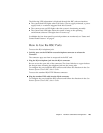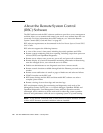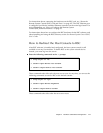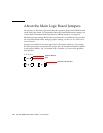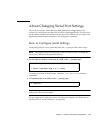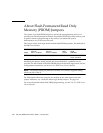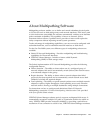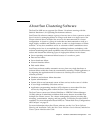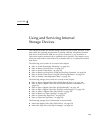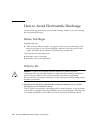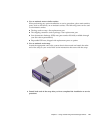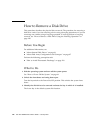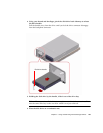
Chapter 4 Hardware and Software Configuration 117
About Sun Clustering Software
The Sun Fire 280R server supports Sun Cluster 3.0 software running with the
Solaris 8 Hardware 1/01 Operating Environment software.
Sun Cluster 3.0 software connects a group of servers into a cluster system to avoid a
loss of service by managing failures on a larger scale than on a single server. Sun
Cluster software allows multiple Sun servers to be interconnected in a cluster
configuration. A cluster is a group of nodes that are interconnected to work as a
single, highly available and scalable system. A node is a single instance of Solaris
software – it may be a standalone server or a domain within a standalone server.
Avoiding service loss is accomplished by combining hardware redundancy with
software monitoring and restart capabilities into the software cluster. Such measures
reduce and forestall the following types of single-point failures in the cluster:
■ Server operating environment failure because of a crash or a panic
■ Data service failure
■ Server hardware failure
■ Network interface failure
■ Disk media failure
Sun Cluster software enables automatic recovery from any single hardware or
software failure within the cluster by automatically restarting a failed application, or
by migrating the application and its resources to a backup server. Sun Cluster
software provides:
■ Hardware and software failure detection
■ System administration
■ System failover and automatic restart of data services in the event of a failure
■ A set of high availability (HA) data services
■ Application programming interface (API) software to create other HA data
services by integrating them within the Sun Cluster framework
The Sun Cluster system uses Solstice DiskSuite or VERITAS Volume Manager
(VxVM) software to administer multihost disks arrays that are accessible from
multiple Sun Cluster servers. The volume management software provides disk
mirroring, concatenation, striping, and hot sparing. VxVM also provides RAID 5
capability. For more information about RAID, see “About Disk Array Configurations
and Concepts” on page 87.
For more information about Sun Cluster software, see the Sun Cluster Software
Planning and Installation Guide, the Sun Cluster Hardware Service Manual, and the Sun
Cluster System Administration Guide.



